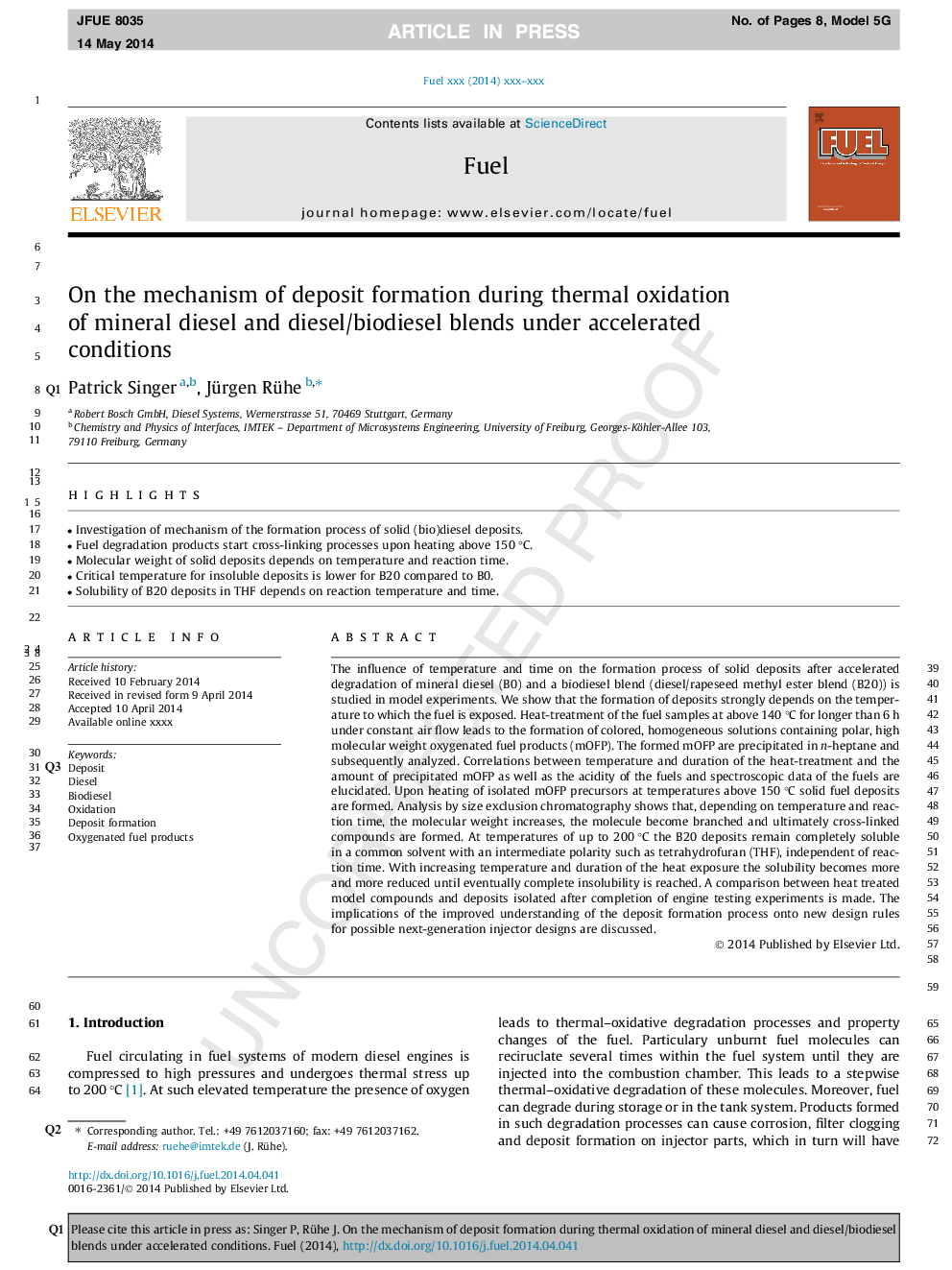| کد مقاله | کد نشریه | سال انتشار | مقاله انگلیسی | نسخه تمام متن |
|---|---|---|---|---|
| 6637188 | 461140 | 2014 | 8 صفحه PDF | دانلود رایگان |
عنوان انگلیسی مقاله ISI
On the mechanism of deposit formation during thermal oxidation of mineral diesel and diesel/biodiesel blends under accelerated conditions
ترجمه فارسی عنوان
در مکانیزم تشکیل رسوب در اکسیداسیون حرارتی دیزل معدنی و دیزل / بیودیزل مخلوط تحت شرایط شتاب
دانلود مقاله + سفارش ترجمه
دانلود مقاله ISI انگلیسی
رایگان برای ایرانیان
کلمات کلیدی
دیزل، بیودیزل، اکسیداسیون، شکل گیری سپرده، محصولات سوخت اکسیژن،
موضوعات مرتبط
مهندسی و علوم پایه
مهندسی شیمی
مهندسی شیمی (عمومی)
چکیده انگلیسی
The influence of temperature and time on the formation process of solid deposits after accelerated degradation of mineral diesel (B0) and a biodiesel blend (diesel/rapeseed methyl ester blend (B20)) is studied in model experiments. We show that the formation of deposits strongly depends on the temperature to which the fuel is exposed. Heat-treatment of the fuel samples at above 140 °C for longer than 6 h under constant air flow leads to the formation of colored, homogeneous solutions containing polar, high molecular weight oxygenated fuel products (mOFP). The formed mOFP are precipitated in n-heptane and subsequently analyzed. Correlations between temperature and duration of the heat-treatment and the amount of precipitated mOFP as well as the acidity of the fuels and spectroscopic data of the fuels are elucidated. Upon heating of isolated mOFP precursors at temperatures above 150 °C solid fuel deposits are formed. Analysis by size exclusion chromatography shows that, depending on temperature and reaction time, the molecular weight increases, the molecule become branched and ultimately cross-linked compounds are formed. At temperatures of up to 200 °C the B20 deposits remain completely soluble in a common solvent with an intermediate polarity such as tetrahydrofuran (THF), independent of reaction time. With increasing temperature and duration of the heat exposure the solubility becomes more and more reduced until eventually complete insolubility is reached. A comparison between heat treated model compounds and deposits isolated after completion of engine testing experiments is made. The implications of the improved understanding of the deposit formation process onto new design rules for possible next-generation injector designs are discussed.
ناشر
Database: Elsevier - ScienceDirect (ساینس دایرکت)
Journal: Fuel - Volume 133, 1 October 2014, Pages 245-252
Journal: Fuel - Volume 133, 1 October 2014, Pages 245-252
نویسندگان
Patrick Singer, Jürgen Rühe,
